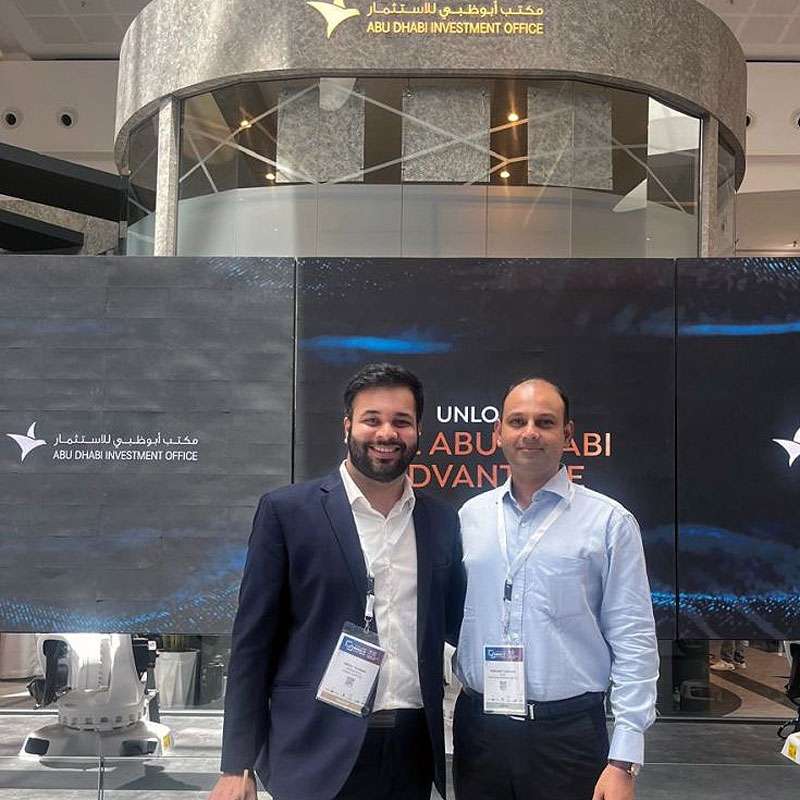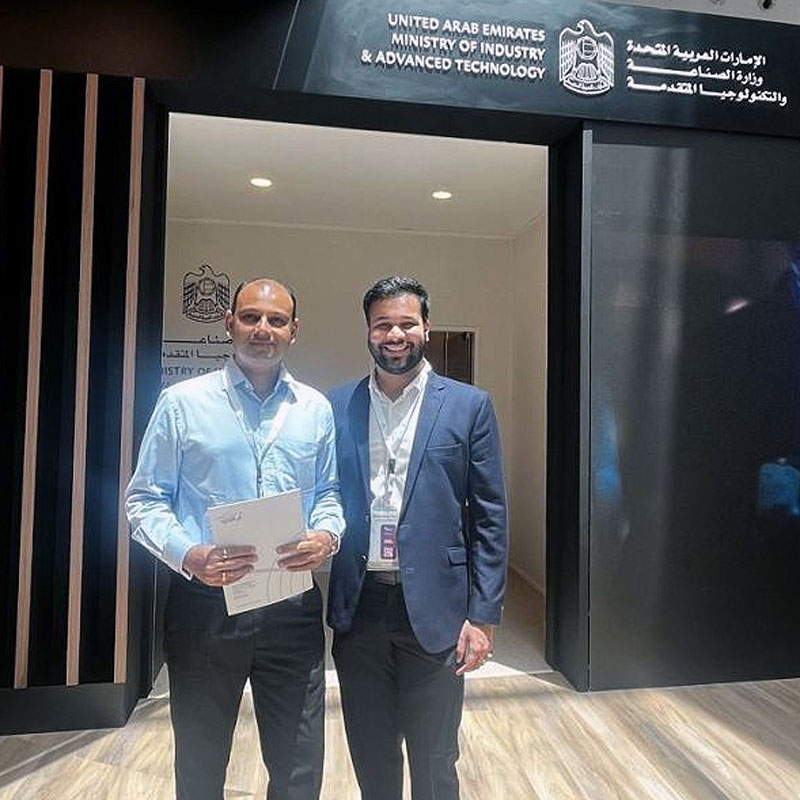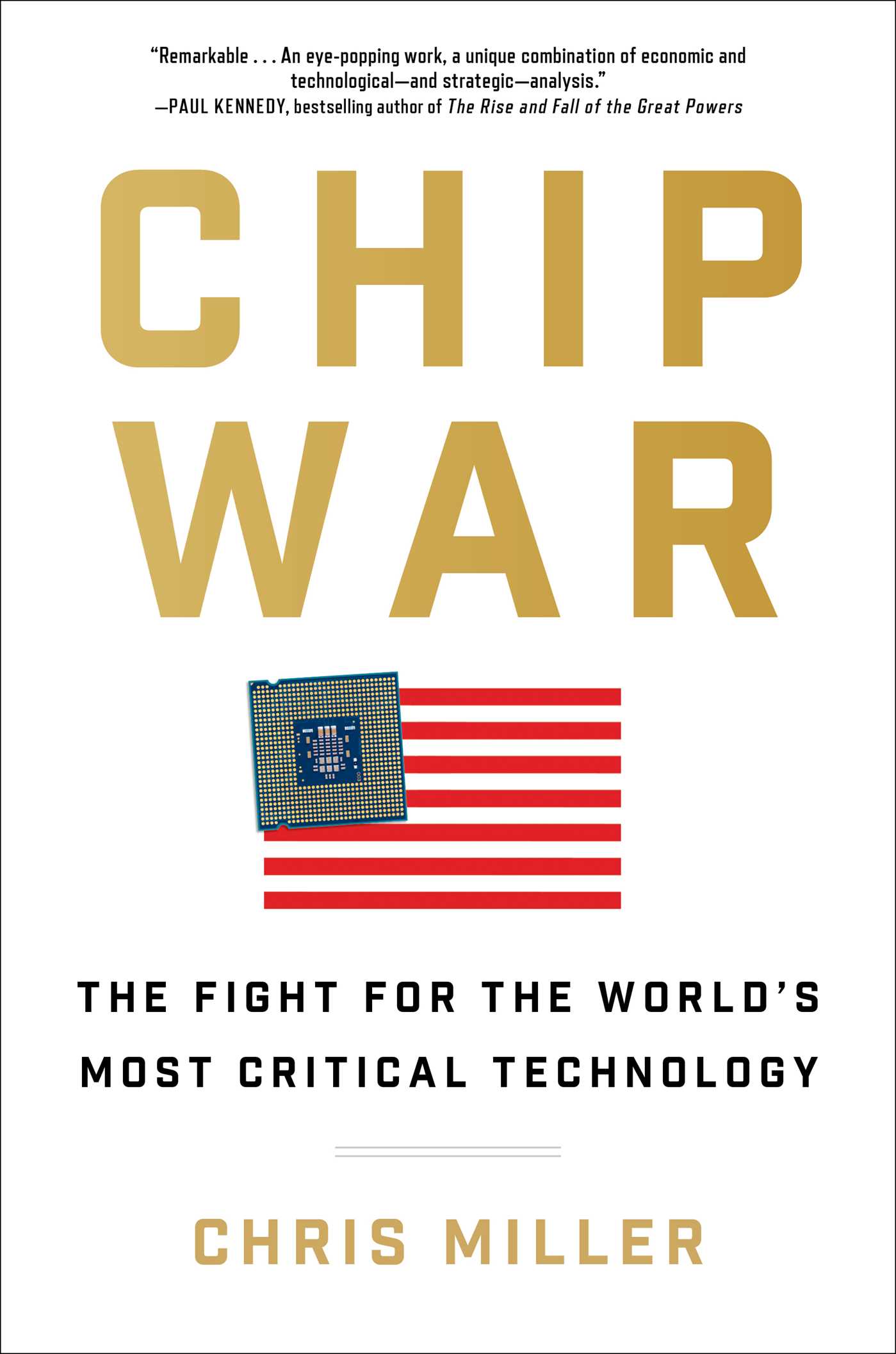Listen to this Museletter
Autonomy: A Structural Shift, Not a Trend
Who’s really calling the shots these days — governments or gadgets? The world’s new power players don’t wave flags; they run on code. Autonomy isn’t some far-off fantasy — it’s the engine quietly rebooting how we fly, fight, heal, and power up.
We’ve moved beyond automation’s party tricks. This is about building systems that think for themselves, outmanoeuvre threats, and solve problems before we spot them. Forget playing catch-up — autonomy is setting the pace, and those who master it will set the rules.
From satellites that sidestep space junk to grids that outsmart blackouts, we’re not just watching history happen — we’re helping engineer it. The future won’t be won by bigger arsenals or faster jets, but by systems that are smarter, faster, and always a step ahead.
At Agna, we’re not just investing in tech. We’re backing the teams building the brains of tomorrow’s world. Because in this game, whoever builds autonomy, owns the future.
Museletter Highlights:
- Agna Insights
Read through the Autonomy Imperative across DeepTech - Agna Perspectives
Interesting and insightful reads from our social media -
Agna Team
Agna Team’s engagements, and interactions with key players in the DeepTech ecosystem - On the ‘Front’ier Tech
Latest updates on Frontier Technologies - Agna Recommends
Team Agna’s curated recommendations for you
Agna Insights
Summary
Agna sees autonomy as a foundational shift—an engineering-led transformation of how societies function and compete. It is no longer about automation or isolated innovation, but about embedding intelligence across critical systems that shape mobility, security, health, and climate. As DeepTech converges with geopolitics, control over autonomous systems will define the next phase of global influence and economic value creation.
Agna’s focus lies in building SMARTer systems — Specialised, Modular, Autonomous, Resilient, and Thermal/Energy-innovative infrastructure — across markets like the Middle East and India. This investment thesis is applied across four strategic sectors:
Aerospace
Autonomous technologies are reshaping how we operate beyond and within Earth’s atmosphere.
- Satellites are serviced by autonomous drones and robotic systems, reducing failure and cost.
- Electric and combat UAVs, including eVTOLs, are shifting aerial mobility and defence logistics.
- AI, robotics, sensor fusion, and 3D printing enable precision, scale, and adaptability.
- Significant investment from India, the UAE, and KSA is accelerating this transition.
National Security
Strategic advantage now hinges on intelligent, self-governing defence ecosystems.
- Autonomous platforms carry out reconnaissance, threat detection, and combat missions.
- Technology sovereignty across chips, data, and satellites is a national priority.
- Dual-use technologies expand the impact of defence-grade systems into civilian markets.
- AI/ML, computer vision, and edge computing are central to decision dominance.
Life Sciences
Healthcare is evolving into a data-driven, autonomous system of real-time care.
- Digital twins and nanopills personalise monitoring and delivery of treatment.
- AI reduces R&D timelines and cost in drug development and clinical trials.
- Additive manufacturing produces patient-specific implants and bioresorbable devices.
- Wearables and virtual care tools create always-on, adaptive health systems.
Climate Technologies
Autonomy is enabling the reengineering of infrastructure towards sustainability.
- AI-led grids optimise energy flows, cooling systems, and renewables integration.
- New mobility models—from hydrogen aviation to solid-state EVs—are gaining ground.
- Earth observation systems support emission tracking and environmental monitoring.
- Carbon capture and predictive analytics contribute to real-time climate response.
Agna is building systems where autonomy is not just embedded, but decisive—structuring the future of sovereign infrastructure, intelligent economies, and scalable resilience.
The Autonomy Imperative: Engineering DeepTech’s Future Across Agna Capital’s Strategic Sectors
What if the next superpower isn’t a country, but a system?
One that thinks, adapts, and evolves on its own. One that doesn’t just respond, but anticipates.
We are not witnessing a digital revolution—we are engineering the rise of an autonomous civilisation.
Autonomy is no longer sci-fi. It’s the invisible infrastructure already rewriting how we fight wars, explore the skies, treat diseases, and fuel our cities. It is the new geometry of power—silent, systemic, and self-governing. And at Agna Capital, we believe whoever engineers this future owns it.
This isn’t about chasing trends. This is about architecting the irreversible.
From AI-driven battlefronts to self-repairing satellites, from nanopill treatments to grid-aware energy systems, autonomy is the defining axis of modern civilisation.
And Agna is all in.
The twenty-first century is not merely witnessing technological evolution; it is undergoing an engineering-led revolution fundamentally driven by autonomy. Far from a distant, futuristic concept, autonomy is now actively reshaping mission-critical systems across diverse domains, forging an inevitable path for progress. This foundational shift underpins the very fabric of Agna Capital’s investment thesis, threading through our four core sectors: National Security, Aerospace, Climate Technologies, and Life Sciences. Agna recognises that control over this emerging paradigm of intelligent, self-governing systems will define the next era of global power and economic value creation.
The shift towards autonomy is a structural inevitability, demanding infrastructure that can adapt, learn, and operate independently, mirroring the intelligence it supports. As emerging technologies converge, systems are becoming increasingly compute-intensive, latency-sensitive, bandwidth-hungry, and energy-dependent, exposing limitations in traditional infrastructure. This necessitates a radical rethink in how systems are designed and deployed, moving from reactive, siloed approaches to proactive, adaptive, and context-aware operational frameworks. Agna’s focus on DeepTech innovations built on the foundation of Data and Engineering uniquely positions the firm to capitalise on this transformative trend, particularly within the robust markets of the Middle East and India, driving exponential returns.
Aerospace: Redefining the Skies and Beyond
The aerospace sector is undergoing a profound transformation, with autonomy serving as the linchpin for new frontiers in space exploration, air mobility, and satellite operations. From Space-based data analytics and ML applications to Space debris management and Satellite maintenance and repair, the application of AI-driven solutions is enhancing efficiency, reliability, and innovation across the industry.
In space, autonomous systems are critical for managing the growing challenge of space debris. Indian startup Digantara has developed a space situational awareness platform that tracks debris in real-time, utilising AI to predict trajectories and suggest evasive manoeuvres to prevent collisions. Complementary efforts include West Virginia University’s development of AI-powered space lasers to redirect debris, an autonomous approach that reduces collision risks for all sizes of debris. For satellite maintenance and repair, AI is transforming operations through autonomous robots and drones, as exemplified by Starfish Space’s AI-driven Otter spacecraft for autonomous docking and Northrop Grumman’s Mission Extension Vehicles (MEVs). These systems predict equipment failures by analysing sensor data, ensuring timely repairs and significant cost savings. The defence drone market is now worth USD 11.2 billion (2025), growing at a 7.5% CAGR and projected to USD 21.3 billion by 2034. Agna’s inaugural May 2024 Museletter extensively explored the transformative potential of quantum computing in space, including its role in improved space manufacturing and smarter data analysis for astrophysical phenomena.
Closer to Earth, Advanced Air Mobility (AAM) and electric vertical takeoff and landing (eVTOL) vehicles are poised to revolutionise transportation, driven by autonomous capabilities. Flying Wedge Defence & Aerospace has introduced India’s first indigenously developed combat UAV, the FWD 200B, enhancing unmanned warfare capabilities and offering an affordable alternative to imported systems. Civilian applications are equally impactful: Indian startups like Sarla Aviation and ePlane Company are advancing sustainable eVTOL technologies, aligning with the global push for greener transport. The UAE and KSA are also heavily investing in these technologies, with companies like Archer Aviation and Joby Aviation forging strategic partnerships to introduce electric air taxi services, and NEOM investing in Regent’s electric seaglider development and Volocopter. ADASI, a key player in the UAE’s unmanned systems, develops UAVs like the “Falcon” series for both reconnaissance and combat missions, showcasing indigenous defence tech commitments.
The technological enablers driving autonomy in aerospace include:
- AI/ML:
Essential for predicting trajectories, autonomous docking, and optimising spacecraft designs and operations. - Robotics:
Facilitating autonomous satellite maintenance and advanced drone operations. - Sensor Fusion:
Crucial for tracking space debris and enabling precise navigation for autonomous vehicles. - 3D Printing:
Used in optimising manufacturing processes for lightweight and durable spacecraft materials in microgravity.
Agna’s September 2024 newsletter on ‘Rockets, Jets, Chips’ spotlighted how India, the UAE, and KSA are emerging as key global players in Aerospace and Defence, reinforcing Agna’s conviction in this sector.
National Security: The Architecture of Autonomous Control
National security has transcended traditional borders, now encompassing the intricate architecture of data, satellites, chips, and cognition that underpins a nation’s strategic control. The era of frictionless globalisation is concluding, giving way to a “strategic fragmentegration” where defence, technology, and industrial ecosystems are decoupling across blocs while certain interdependencies persist. This necessitates the buildout of secure, domestic, or allied alternatives across key strategic assets, making sovereignty of everything—from cyber and compute to energy and data—the bedrock of twenty-first-century power.
Autonomy is central to this paradigm shift. The integration of AI, robotics, and cyber-physical systems is driving a new class of defence capabilities, where technological advantage is directly linked to strategic advantage and national resilience. This is evident in the rapid deployment of autonomous systems such as drones and unmanned vehicles for surveillance, reconnaissance, combat operations, and logistical support. Companies like Shield AI and Vantage Robotics, for instance, are pioneering AI-powered drones for tactical operations and surveillance missions, while Boston Dynamics’ Spot and Stretch robots are deployed for various defence applications, including logistics. Furthermore, Anduril Industries and Palantir Technologies leverage AI for advanced surveillance systems, providing real-time threat detection and enhanced situational awareness by integrating data from various sensors and cameras.
The technological enablers for this autonomous evolution include:
- AI/ML:
Powering AI pilots for autonomous aircraft, predictive maintenance for military equipment, and sophisticated threat detection systems. - Robotics:
Deploying advanced robotic systems for navigation in complex terrains and logistical support. - Sensor Fusion and Computer Vision:
Integrating data from multiple sources like satellite imagery and ground sensors to provide comprehensive security insights. - Edge Computing:
Enabling real-time processing of data closer to the source, crucial for rapid autonomous decision-making in combat and surveillance scenarios. - Simulation Platforms & Foundation Models- Talk on Nvidia’s Cosmos- (World Foundation Model) and Omniverse (the Digital Twin platform)
The April edition of The Agna Museletter, “Chariots, Codes, and Constellations” explicitly categorises national security layers, focusing on dual-use technologies that serve both defence and civilian markets. This includes autonomous defence and ISR (Intelligence, Surveillance, and Reconnaissance) platforms, perimeter and internal security systems, and counter-UAS (Unmanned Aerial Systems) solutions, alongside civilian applications like environmental and disaster intelligence. Our perspective highlights how private capital is acting as a strategic force multiplier, catalysing these critical innovations where governments alone cannot keep pace.
Life Sciences: The Future of Predictive and Personalised Healthcare
The life sciences sector is on the cusp of a profound transformation, moving towards a future where healthcare is predictive, personalised, and proactive. This ambitious vision is increasingly enabled by autonomous systems and AI, promising to redefine disease prevention, diagnosis, and treatment. Agna’s January 2025 Museletter, “AI Rx for Life Sciences,” paints a vivid picture of this future, highlighting concepts such as digital twins—AI-powered replicas of unique biology that monitor physiological changes in real-time—and nanopills capable of delivering medication with laser-like precision while transmitting vital health data.
Autonomy is actively being deployed across the entire healthcare value chain:
- Drug Discovery and Clinical Trials:
In 2024, the AI-in-drug-discovery market was valued at USD 1.72 B, and is forecast to grow to USD 8.5 B by 2030. AI is tackling the colossal time and cost associated with bringing drugs to market (12-15 years and $2.5 billion). AI-based hypothesis generation aids drug repurposing and licensing, while AI-driven design creates new, differentiated molecules for established or novel targets. In clinical trials, companies like Unlearn.AI use “digital twin” technology to simulate control groups, reducing participant numbers and expediting recruitment. Decentralised trial platforms from Medable and Science 37 integrate AI with wearable devices for real-time monitoring of patient adherence and outcomes. AI’s ability to process vast datasets is a game-changer for trial analytics, with Tempus and Owkin making strides in extracting actionable insights and enabling federated learning without compromising data privacy. - Manufacturing and Implants:
AI-powered 3D printing is enabling the creation of patient-specific implants tailored to individual anatomies, addressing issues with standardised “off-the-shelf” options. Companies like Axial3D convert medical imaging data into accurate 3D models for enhanced surgical planning, and advancements in bioresorbable implants (Bioretec) eliminate the need for secondary surgeries. - Diagnostics:
AI algorithms can identify disease patterns imperceptible to human clinicians, revolutionising predictive diagnostics. PathAI analyses medical images for anomalies, and AI-driven blood tests can detect early-stage cancers. Personalised risk profiling solutions, such as Neko health, analyse genetic, environmental, and lifestyle factors to empower tailored preventive care strategies. - Treatment Management:
AI supports ongoing care through virtual health assistants like Suki, streamlining administrative tasks and enhancing patient engagement. AI-enabled devices, such as AliveCor’s KardiaMobile, continuously track vital signs for remote monitoring, enabling timely interventions. Dynamic treatment plans, offered by platforms like Tempus, adjust therapies based on real-time patient data, especially crucial in fields like oncology.
The technological enablers propelling autonomy in life sciences are multifaceted:
- AI/ML:
The overarching enabler, crucial for drug discovery, clinical trials, diagnostics, and personalised treatment plans. - Bioinformatics:
Essential for processing and analysing vast biological and molecular datasets that feed AI models. - Robotics:
Applied in manufacturing of medical devices and potentially in surgical assistance (robotic heart surgery noted as a ‘Frontier Tech’ item). - Nanotechnology:
Enabling precision delivery and data collection via nanopills. - 3D Printing:
For creating customised implants and organ-on-a-chip technologies. - Sensor Fusion (Wearable Devices):
For continuous remote monitoring and real-time data collection.
Agna’s October 2024 Museletter on “Cell-ebrating Life” explicitly addressed the convergence of frontier technologies like AI, CRISPR, and synthetic biology in transforming health and conservation. This consistent narrative underscores Agna’s strategic foresight into the autonomous future of healthcare, reflecting our commitment to impactful DeepTech.
Climate Technologies: Engineering a Sustainable Future Through Autonomy
Addressing climate change and achieving net-zero emissions necessitates a fundamental re-engineering of our energy and mobility systems, with autonomy playing a pivotal role. Advances in low-cost CO2 capture systems, groundbreaking innovations in electric and hybrid aircraft, advanced battery chemistries, and sophisticated carbon accounting systems are catalysing the transition to a sustainable future. Agna’s November 2024 Museletter, “The Infinite Quest for Energy,” underscored the critical need for sustainable, reliable energy solutions for a growing world, where energy demand is projected to rise by 18% by 2050, partly due to energy-intensive technologies like AI.
Autonomous and intelligent systems are revolutionising various aspects of climate technology:
- Adaptive Energy Grids:
AI is becoming the “brains behind the grid,” optimising energy distribution through predictive analytics and ensuring efficient balancing of supply and demand across regions and time zones. Smart grids, enhanced by AI, integrate renewable energy sources more effectively, mitigating fluctuations and reducing curtailment. For instance, Google has implemented DeepMind’s AI to autonomously manage cooling systems in its data centres, resulting in a 30% reduction in energy used for cooling, showcasing autonomous optimisation for energy efficiency. Data centres powering AI (from ChatGPT to autonomous systems) demand massive grid upgrades. Electricity demand is growing ~2.5% annually (2024–2035), with over USD 1.4 trillion needed for new capacity. AI-driven, grid-aware load-balancing systems are also gaining traction, aligning low-priority workloads with off-peak hours or renewable energy availability to reduce carbon impact and optimise energy costs. - Next-Gen Mobility:
The future of mobility is being reshaped by advancements in hydrogen-electric aircraft, such as ZeroAvia’s pioneering efforts with successful test flights for zero-emission aviation. In the automotive sector, solid-state batteries are extending the range and efficiency of electric vehicles (EVs), with Toyota leading the charge. Hydrogen mobility infrastructure is also advancing, exemplified by the Alstom Coradia iLint, the world’s first hydrogen-powered passenger train already in service in Germany. These developments pave the way for a more sustainable and eventually autonomous transport sector. - Resource Management and Monitoring:
Earth Observation (EO) technologies, featuring advanced sensors like Synthetic Aperture Radars (SAR), infrared, and hyperspectral cameras, are revolutionising data collection for environmental monitoring and disaster management. SAR technology monitors deforestation and floods, infrared cameras detect wildfires, and hyperspectral cameras enhance precision agriculture by monitoring crop health. Crucially, these EO technologies are pivotal in achieving net-zero emissions by tracking methane emissions worldwide and monitoring urban air quality.
The technological enablers powering autonomy in climate technologies include:
- AI/ML:
Indispensable for optimising energy grids, managing carbon footprints, predicting environmental changes through EO data, and accelerating the development of new clean energy solutions. - Advanced Battery Chemistries:
Solid-state batteries and flow batteries are crucial for addressing the intermittency of renewable energy sources and enabling long-term energy storage. - Sensor Technology:
Including SAR, infrared, and hyperspectral cameras, for precise environmental monitoring and data collection. - Carbon Capture Technologies:
Like Direct Air Capture (DAC), essential for reducing atmospheric carbon levels.
Agna’s August 2024 Museletter emphasised Engineering’s transformative role in driving human progress, including sustainable mobility and climate tech, offering solutions to critical global challenges. The firm’s forthcoming Engineering Thesis will feature deep dives into climate tech, underscoring its strategic importance.
Conclusion: Agna’s Conviction in the Autonomous Future
The pervasive thread of autonomy across Aerospace, National Security, Life Sciences and Climate Technologies is undeniable. It is not merely a technological trend but a structural inevitability, reshaping industries and defining the future of human progress. From the algorithmic precision of AI-powered defence systems and satellite operations to the adaptive intelligence governing energy grids and the personalised care delivered by autonomous healthcare solutions, autonomy is the core capability that unlocks unprecedented efficiency, resilience, and human potential.
Agna stands as a conviction-led investor, strategically positioned to back the audacious teams building this autonomous future. Our thesis is rooted in the belief that the winners of the DeepTech era will be those who construct, fund, and operate SMARTer systems—Specialised, Modular, Autonomous, Resilient, and Thermal/Energy-innovative infrastructure. This approach unifies our sectoral focus:
- In National Security, we target dual-use innovations that build sovereign-aligned, intelligent infrastructure for strategic autonomy, leveraging private capital to modernise capabilities beyond what governments can achieve independently.
- In Aerospace, we invest in autonomous systems that revolutionise space exploration, orbital operations, and advanced air mobility, reducing costs and expanding access to critical capabilities.
- In Climate Technologies, we back intelligent solutions that drive sustainable energy transitions, from adaptive grids and advanced battery chemistries to efficient CO2 capture and green mobility, optimising resource use and mitigating environmental impact.
- In Life Sciences, our focus is on enabling a predictive and personalised healthcare ecosystem through AI-driven drug discovery, autonomous diagnostics, and smart treatment management, transforming human health and longevity.
Our consistent engagement with these themes across our Agna Museletters, from the inaugural May 2024 edition on Quantum Computing in Space to the latest on intelligent infrastructure, demonstrates our unwavering commitment to this foundational shift. We believe that by investing in companies that embed autonomy, we are not merely supporting technological advancement; we are shaping a future where systems are inherently more efficient, resilient, and transformative for all humanity. This is our conviction, and it is the core of our portfolio strategy.
Agna Perspective
- Read how the UAE is positioning itself as a long-term orchestrator of AI-led economic transformation through sovereign capital, regulatory innovation, and deep tech infrastructure. For Agna, this creates a unique structural advantage to unlock alpha at the intersection of emerging technologies and emerging markets.
- Gulf nations have sealed over $2T in deals, using capital and tech infrastructure as tools of diplomacy, with only $700B binding so far. Agna is positioned to catalyse this East-West corridor through its strategic DIFC base and sector focus.
- Data centres are now under intense regulatory scrutiny as climate policy, digital sovereignty, and national security reshape the sector. For investors, compliance-first strategies and localised builds are critical to avoid stranded infrastructure and capture future value.
Team Engagement
Glimpse from the Make it in the Emirates that the #TeamAgna attended!


It promoted #UAE’s push for industrial growth under the “Operation 300bn” strategy.
The event underscored UAE’s ambition to become a global industrial hub through advanced manufacturing and tech. Read more
On the ‘Front’ier Tech:
- TiHAN at IITH is India’s first testbed for autonomous mobility, developing AGVs, UAVs, and smart transport systems. It’s bridging academia and industry to accelerate real-world deployment of self-driving tech.
- Tesla has launched its Robotaxi pilot in Austin, Texas — a limited geofenced fleet of Model Ys offers invite-only, $4.20 rides with a safety monitor passenger onboard.
- Indian women are shattering stereotypes across every frontier—from piloting drones and leading Mars missions to founding startups and co-creating India’s digital economy—emerging as unstoppable architects of progress.
- The Robot Report’s Healthcare section covers major advances in medical robotics, including AI-powered surgical systems like Monarch (tested on 679 patients), robotic drug delivery (e.g., Rani Therapeutics raising $73M), and lab automation tools like pipetting robots. It also highlights growth in telepresence and disinfection robots, driven by hospital staffing needs and pandemic lessons.
Agna Recommends:

The Exponential Age by Azeem Azhar Deep tech disruption, macroeconomic shifts, and the widening gap between accelerating technologies and slower-moving institutions.

Chip War: The Fight for the World’s Most Critical Technology by Chris Miller
A must-read to understand how critical technologies like chips shape foreign policy, economic power, and the global supply chain.

Invest Like the Best by Patrick O’Shaughnessy
A podcast for investors exploring the edge of innovation, featuring candid conversations with top venture capitalists, technologists, and entrepreneurs shaping the future.

ChinaTalk by Jordan Schneider
A deeply-researched podcast dissecting China’s tech-industrial strategy, geopolitics, and emerging technologies like semiconductors, AI, and defence systems.
Listen to this Museletter
Questions? Feedback? Different perspective?
We invite you to engage with us and collaborate.
Warm Regards,
Team Agna
Click below to join our mailing list for The Agna Museletter.
